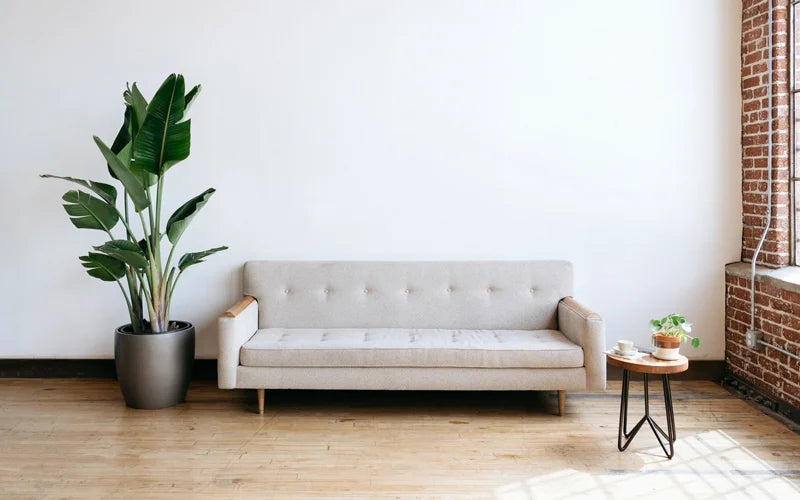
Scandinavian Design and It's Impact on Living Quality
Share
Scandinavian design has long been celebrated for its simplicity, functionality, and connection to nature. Originating in the early 20th century and gaining global recognition in the 1950s, this design philosophy emerged from the Nordic countries—Denmark, Finland, Norway, Sweden, and Iceland. The harsh climate and long winters of the region played a significant role in shaping a style that maximizes light, comfort, and practicality. But beyond aesthetics, Scandinavian design has a profound impact on living quality, influencing mental well-being, productivity, and overall lifestyle.
The Core Principles of Scandinavian Design
At its heart, Scandinavian design is about stripping away excess and focusing on what truly matters. It embraces minimalism without feeling cold or impersonal, creating spaces that are both inviting and efficient. Clean lines and simple forms define furniture and architecture, while neutral color palettes, primarily whites, greys, and earth tones, enhance the sense of spaciousness. Natural materials such as wood, wool, and leather are integral to Scandinavian interiors, bringing warmth and texture to the home. Large windows, open layouts, and carefully chosen lighting solutions help maximize natural light, making spaces feel bright and airy.
Functionality is another key aspect of Scandinavian design. Every piece of furniture is designed with purpose, avoiding unnecessary ornamentation in favor of practical beauty. Storage solutions are often integrated seamlessly into the design, allowing for clutter-free environments that contribute to a sense of calm and order.
A Stress-Free Environment Through Minimalism
Research has shown that clutter can have a negative impact on mental health, increasing stress and reducing focus. Scandinavian design promotes a decluttered, organized living space, which can help lower anxiety levels and create a more peaceful atmosphere. A study published in the Journal of Environmental Psychology found that individuals living in minimalist environments reported lower cortisol levels, the primary stress hormone, compared to those in cluttered spaces. By prioritizing simplicity, Scandinavian design fosters a sense of tranquility, making it easier to relax and recharge.
Enhancing Well-Being Through Nature
One of the defining characteristics of Scandinavian design is its deep connection to nature. The use of raw, organic materials like untreated wood, stone, and wool brings the outdoors inside, creating a soothing environment that aligns with biophilic design principles. Multiple studies have linked exposure to natural elements with increased well-being. Research from the University of Exeter found that incorporating natural materials and greenery into interior spaces significantly boosts mood and cognitive function. Additionally, Scandinavian interiors often feature houseplants, which not only enhance aesthetics but also improve air quality by filtering toxins.
Maximizing Light for Better Mental Health
The Nordic region experiences long, dark winters, making natural light a crucial aspect of Scandinavian design. Homes are designed with large windows, light-reflecting surfaces, and soft lighting to create an illusion of brightness even during the darkest months. Studies have highlighted the benefits of natural light on mental health, with research from the Journal of Clinical Sleep Medicine revealing that exposure to daylight enhances mood, reduces symptoms of depression, and improves overall sleep quality. By incorporating ample lighting solutions, Scandinavian design ensures a home environment that supports emotional well-being.
Encouraging Social Interaction and Connection
Scandinavian interiors are often designed with open layouts that encourage socializing and togetherness. The furniture arrangement prioritizes communal living, with cozy seating areas, inviting dining spaces, and multifunctional rooms that accommodate gatherings. This reflects the Nordic cultural values of warmth, hospitality, and connection. The concept of hygge—a Danish term that describes a feeling of coziness and contentment—further reinforces this idea, promoting design choices that foster closeness and relaxation. When people feel comfortable and connected in their living spaces, their quality of life improves significantly.
Sustainability and Conscious Living
Sustainability is a cornerstone of Scandinavian design, which aligns with the growing awareness of environmentally responsible living. Many Scandinavian brands emphasize sustainable production, using recycled materials and ethical sourcing. Furniture and home décor items are often crafted to last for generations rather than following fleeting trends. This approach not only reduces waste but also encourages a mindful lifestyle, where consumers invest in high-quality, durable items rather than accumulating disposable goods. Living in a space designed with sustainability in mind can promote a sense of purpose and responsibility, enhancing overall life satisfaction.
The Science Behind Scandinavian Design and Well-Being
Numerous scientific studies support the positive effects of Scandinavian design principles on overall well-being. Research has shown that minimalist and well-organized spaces can enhance cognitive function, reduce anxiety, and even improve productivity. A study by the University of California, Los Angeles (UCLA) found that cluttered environments lead to higher stress levels and reduced concentration. Another study published in Building and Environment highlighted how maximizing natural light exposure in interior spaces improves mood and work efficiency.
Moreover, a review in The International Journal of Environmental Research and Public Health emphasized the health benefits of incorporating natural elements into home design, supporting the idea that Scandinavian interiors contribute to mental and physical well-being. By integrating natural materials, decluttered spaces, and thoughtful lighting, Scandinavian design aligns with evidence-based strategies for creating healthier and happier living environments.
Conclusion
Scandinavian design is more than just a visual style; it is a lifestyle philosophy that prioritizes well-being, sustainability, and simplicity. By creating clutter-free, light-filled, and nature-connected spaces, it enhances both mental and physical health, promoting a high quality of life.
With its emphasis on functionality and mindful consumption, Scandinavian design continues to influence modern living, offering a timeless approach to creating beautiful and harmonious homes.